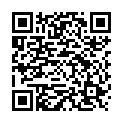|
|
|
| Module code: E1931 |
|
2V+2PA (4 hours per week) |
|
5 |
| Semester: according to optional course list |
| Mandatory course: no |
Language of instruction:
German |
Assessment:
Oral examination
[updated 05.06.2025]
|
BMT931 Biomedical Engineering, Master, ASPO 01.04.2011
, semester 9, optional course, specialisation
BMT1931 (P213-0168) Biomedical Engineering, Master, ASPO 01.04.2014
, optional course, medical/technical
E2931 Electrical Engineering and Information Technology, Master, ASPO 01.04.2019
, optional course, technical
E1931 Electrical Engineering, Master, ASPO 01.10.2013
, optional course, technical
Suitable for exchange students (learning agreement)
|
60 class hours (= 45 clock hours) over a 15-week period.
The total student study time is 150 hours (equivalent to 5 ECTS credits).
There are therefore 105 hours available for class preparation and follow-up work and exam preparation.
|
Recommended prerequisites (modules):
None.
|
Recommended as prerequisite for:
|
Module coordinator:
Prof. Dr. Oliver Scholz |
Lecturer: Prof. Dr. Oliver Scholz
[updated 11.10.2019]
|
Learning outcomes:
After successfully completing the course, students will:
• be able to describe what is meant by “telemetry” and, in particular, “biotelemetry,”
• be able to name at least four common methods of message and signal transmission for telemetry in biomedical applications and provide examples,
• be able to name and describe key aspects of inductive transmission and their significance for biotelemetry,
• be able to roughly dimension essential system variables for inductive transmission,
• be able to implement simple line codes and transmission protocols in µcontrollers using programming techniques,
• be able to to describe how error detection works using cyclic codes,
• be able to extract relevant information for the implementation of application hardware and software from manufacturer specifications in data sheets.
[updated 05.06.2025]
|
Module content:
• Basics of telemetry
• Theory of inductive transmission
• Basics of signal transmission/digital communication
• Channel encoding
• Line codes
• Basics of sensor technology
• Hardware-related programming of a µcontroller
[updated 05.06.2025]
|
Teaching methods/Media:
Lecture notes, transparencies and documentation available from Clix
Test platform for laboratory exercises
[updated 05.06.2025]
|
Recommended or required reading:
Sklar, Bernard: Digital communications: fundamentals and applications, 2nd ed., Upper Saddle River, N.J: Prentice-Hall PTR 2001.
Finkenzeller, Klaus: RFID-Handbuch: Grundlagen und praktische Anwendungen induktiver Funkanlagen, Transponder und kontaktloser Chipkarten, München [u.a.]: Hanser 2006.
Werner, Martin: Information und Codierung Grundlagen und Anwendungen, Wiesbaden: Vieweg+Teubner Verlag / GWV Fachverlage GmbH, Wiesbaden 2009.
Texas Instruments: „PASSIVE LOW FREQUENCY INTERFACE DEVICE WITH EEPROM AND 134.2 kHz TRANSPONDER INTERFACE“. Datenblatt 2009
Bosch Sensortec: „Bosch BMP085 Digital pressure sensor“. Datenblatt 2009
[updated 05.06.2025]
|


